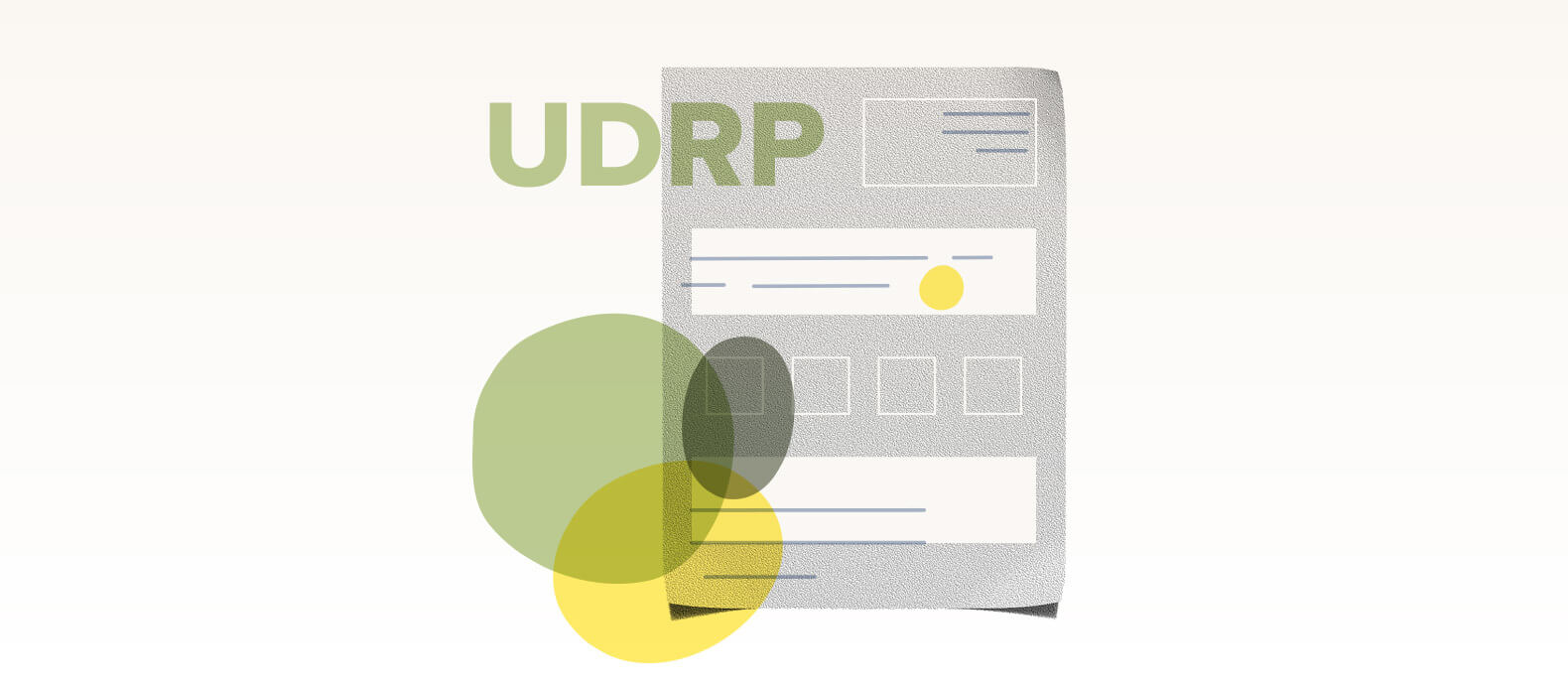Cybersquatting cases have increased by over 11 percent in the last year.
Scammers often register variations of a brand’s domain name for numerous reasons like mimicking the official website to confuse customers, stealing the personal and financial information of customers, or selling counterfeit products. All of which can affect a brand’s reputation and lead to drastic business loss.
By filing a UDRP complaint against cybersquatters, you can effectively get the infringed domains to either shut down or transferred back to you.
In this article, we discuss how to file a UDRP complaint and how Red Points can help streamline the entire process to take all the extra burden off your shoulders.
What is a UDRP complaint?
Uniform Domain Name Resolution Process (UDRP) is a streamlined administrative procedure that decides how website domain name disputes should be settled and it applies to all top-level domains including .org, .com, .biz, and .info.
If you come across a domain name registration that infringes on your trademark, you can file a UDRP complaint about it and proceed with your case to take down the cybersquatters.
It was in 1999 when Internet Corporation for Assigned Names and Numbers (ICANN) officially introduced the UDRP policy knowing that the domain name complaints and disputes would only increase as the internet became steadily more popular and powerful.
The UDRP complaints are handled by a third-party resolution provider like World Intellectual Property Organization (WIPO) or National Arbitration Forum (NAF)
Though it’s important to note that the only resolution under UDRP is either domain name cancellation or transfer.

How much does it cost to file a UDRP complaint?
The cost of filing a UDRP complaint depends on the dispute provider you are opting for, the number of domains in your complaint, and the number of panelists who will decide your case.
Most providers give you the option to choose between a one-member panel and a three-member panel.
Here are the standard fees of major third-party UDRP dispute resolution providers
- For a WIPO UDRP complaint, you are charged $1500 for filing a dispute for as many as five domains names and setting a single-member panel
- National Arbitration Forum (NAF) charges anywhere between $1,300-$2,280 depending on the number of domains for a single panelist. For a three-member panel, it charges anywhere between $2,660-$4,560. depending on the number of domains.
- Asian Domain Name Dispute Resolution Centre (ADNDRC) charges $1300 as a filing fee for a dispute resolution with a single panel member and $2800 for three members on the panel
- Arab Center for Domain Name Dispute Resolution (ACDNDR) charges a minimum fee of $1500 for every dispute
Though this is just the filing fee for UDRP disputes which does not include legal fees that you would have to pay for assistance on the case and its administrative proceedings.
Who can file a UDRP complaint?
Anyone located in regions that acknowledge UDRP can file domain name complaints through the region’s designated service provider. Currently, there are over 40 countries that have accepted and adopted UDRP as the main governing policy for domain name disputes.
To establish your UDRP complaint and get the domain name transferred, your complaint must have the following three essential points:
- The domain name is either identical or similar to a trademark or service mark that you have rights to
- The respondent (or the party you are filing a case against) has no interests or rights to the domain name
- The domain name is being used in bad faith by the respondent
How to submit a UDRP complaint
Pick a third-party dispute resolution provider
Find a dispute resolution provider in your region that fits your case and your budget for the UDRP process. Almost all the resolution providers, including the popular WIPO and NAF, allow you to file UDRP complaints electronically by submitting forms online.
File your complaint
You can file your complaint either by uploading the filled ICANN UDRP complaint form or by directly filling up the form online. You will be required to provide details about:
- You (complainant), your respondent (the party you are filing a case against), and the domain registrar (the party that hosts the domain name)
- Authorized representative for the complainant, which can either be you or your legal counsel
- The domain that is up for dispute and how it is being used in bad faith
- Whether the domain should be transferred or canceled, if the case is decided in your favor
- Whether you will want a single-member panel or a three-member panel
While you can complain against multiple domains in one go, you can only file a UDRP complaint against one respondent with one form. In case you want to draft a complaint against multiple respondents, you will have to fill out multiple forms, each with a separate fee.
UDRP resolution and decision
The provider reviews the complaint according to the UDRP policies. If the complaint complies with everything, the proceeding continues.
In case it doesn’t, you will be notified about it and get 4-5 days to resolve all the highlighted issues in your UDRP complaint form. If you don’t respond back in the speculated time, the domain complaint gets automatically considered withdrawn
When the complaint is validated and accepted, a copy of it will be sent to both the website registrar of the domain in question and the respondent.
The respondent will then get a 20-day window to respond to all the specific allegations that have been made in the UDRP complaint. In case they don’t reply, they will be considered defaulted and you can get the domain transferred or canceled directly.
If the respondent does come back with a response, the dispute resolution provider will then set up a panel for conflict resolution.
The decision gets delivered by the panel in two weeks at the most. If the panel decides in your favor, the domain registrar will be required to either cancel the domain or transfer it to you. Even if you lose the UDRP proceeding, you can still bring a lawsuit against the respondent under local law.
While the total time for resolution can vary according to each case, disputes generally get resolved in up to 60 days.
How can Red Points help protect your domain name?
To say that UDRP filing is time-consuming and financially draining would be an understatement.
Red Points helps you save time and effort by offering domain takedown services to help you keep your brand safe. We detect any and every cybersquatter infringing on your trademark to help you preserve your brand integrity and reputation at all times.
Here’s how Red Points works to control and enforce domains:
- Detect: We discover domains that are using your trademark through active brand audit and monitoring
- Claim: We report domains in order to suspend the domains or retrieve them
- Manage: We identify any portfolio gaps and make strategic decisions to avoid future attacks
Next steps
At the center of your brand’s online presence lies your domain name. Without the right protection, established and growing businesses can risk loss in sales, diverted website traffic, and a severe hit to brand reputation.
Schedule a call with our team to learn how Red Points’ Domain Management Software can protect your brand effectively.






